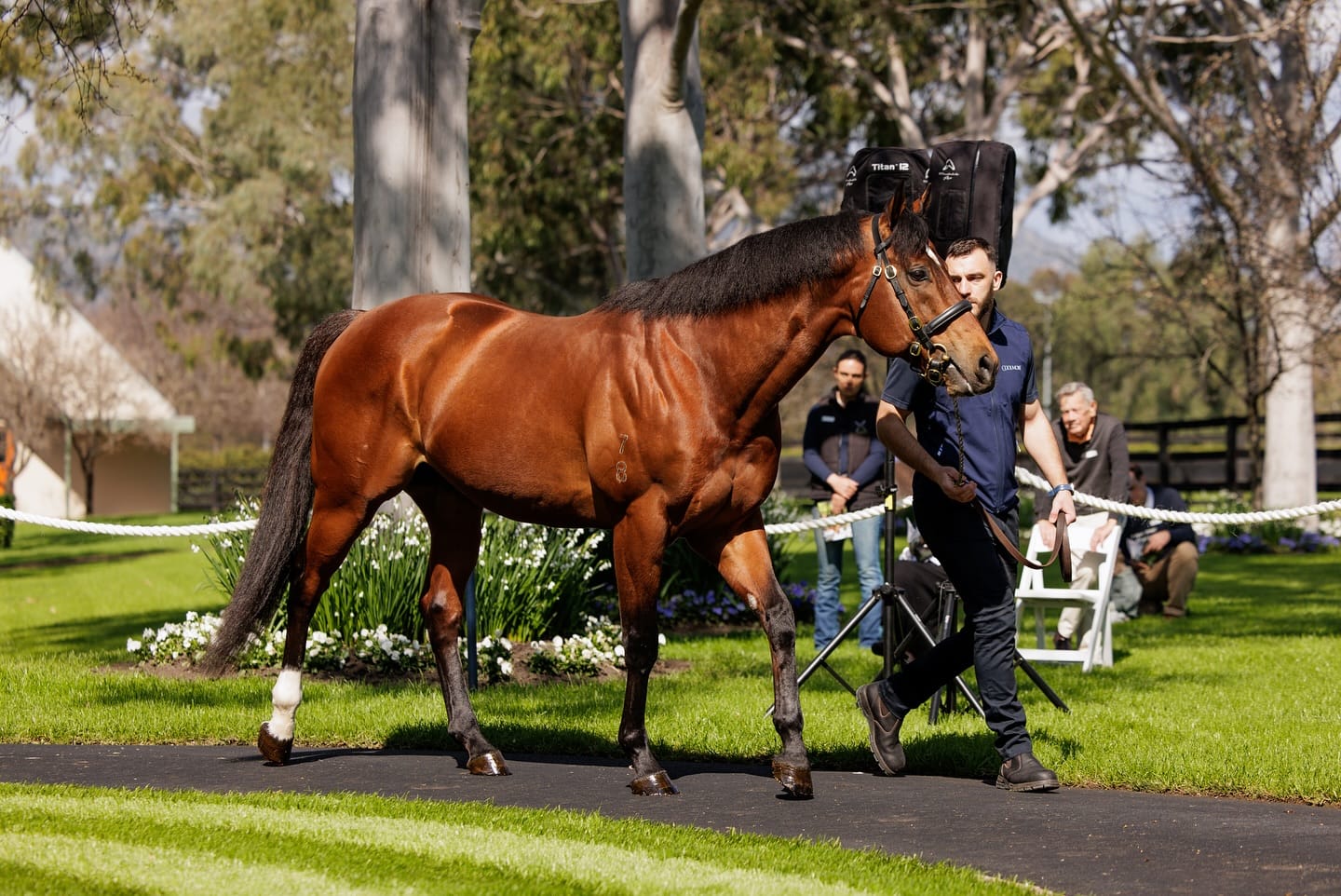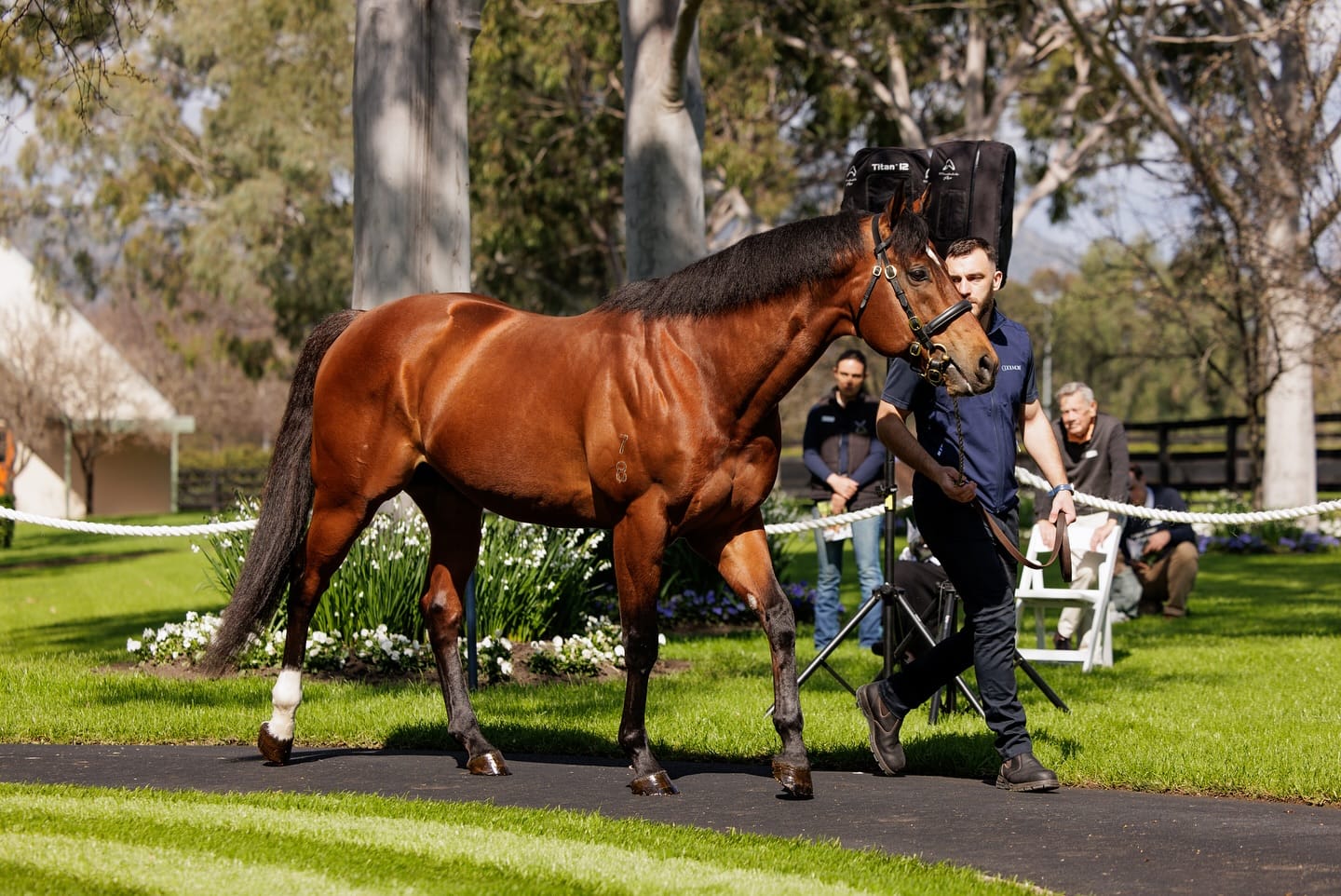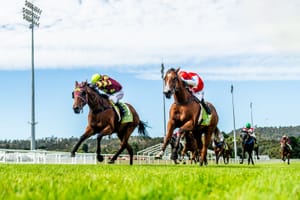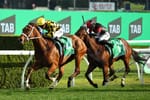
With the breeding season days away from starting, Run The Numbers ponders the question of whether the best time to breed to a stallion is actually his first season at stud.

On a reflective late Sunday afternoon in the Hunter Valley, looking back on the host of stallion parades that had taken place over the previous few days, a couple of learned minds debated when the best time in a stallion’s career to send a mare to him.
That the setting for the debate between one of Australia’s most experienced bloodstock agents and a breeder of considerable means was Coolmore’s Jerrys Plains stud seemed appropriate, given that a couple of hours before Storm Boy, Private Life, Switzerland and City Of Troy had stepped out before a crowd of around 500 people.
The first-season quartet, like the rest of the fresh faces around the stallion farms of Australia and New Zealand, have no runs on the board apart from their racetrack deeds, their pedigrees and good looks. Breeders are being asked to back their instinct in choosing the best first-season offering.
The impact of a first crop is often measured through the performance of their first two-year-olds, but this is often a small and unrepresentative sample of what that entire first crop will achieve. It can certainly be a good pointer, but far from definitive.
Zoustar was champion first-season sire with $3.2 million in progeny earnings and three stakes winners from 10 winners. But that first crop of 123 foals, 106 of which made it to the track, would go on and yield 13 stakes winners, 92 winners in total and earn $35.1 million.
It is by far his highest-earning crop of his 12, including the northern hemisphere, to make it to the track. That initial crop also won a combined 36 stakes races, again the best of any of Zoustar’s crops. The stakes winners total of 13 is his second-best, while 92 is the third-best total of winners.
It would be easy to argue based on those metrics, accounting for the fact that his most recent crops are yet to have their full numbers come through, his first crop, which contained Group 1 winners Sunlight, Zoutori and Mizzy, is his best to date. He stood at $44,000 in that initial season.
Run The Numbers looked at the Top 10 Australian stallions of last season and arguments could be made that in the case of four others, their best-performing crops remain their first.
Pride Of Dubai’s first Australian crop has compiled $42 million in earnings, the highest of any single crop of an Australian-based sire we could find. It contains The Everest winner Bella Nipotina and fellow multiple Group-1 winning mare Pride Of Jenni. It also contains the most winners (66) of any of his eight dual hemisphere crops and the most stakes horses (13).
Pride Of Dubai’s first European crop has more stakes winners, eight as compared to six, than his first Australian crop, and more stakes victories (24 to 22). It also includes two Group 1 winners, Dubai Honour and Deny Knowledge. The total of winners (44) and progeny earnings ($15.6 million) is inferior, so it is easy to argue that first Australian crop, conceived at $55,000, is his best to date.
All Too Hard is another proven star sire whose first crop has arguably proven superior to what has come. Across nine crops, his first has produced the most winners (103), most stakes horses (20) and most stakes winners (eight). His third crop, by far his best for both total of stakes wins (23) and overall progeny earnings ($33.5 million), is the main competition.
That third crop contained his two most prolific Group 1 winners, Alligator Blood and Wellington, but with four stakes winners in total compared to eight from the first crop, you would have to give honours to his first offering.

The other two sires whose best-performing crops to date have been their first come with an asterisk as they are both younger stallions, where the first crop has been far more exposed.
Capitalist has yielded a career-best 109 winners, 17 stakes horses, eight stakes winners and 11 stakes wins from his first crop, but he only has a sample size of five crops.
Harry Angel’s first crop was conceived at Darley’s Dalham Hall Stud in Newmarket. It is his best to date, with 62 winners, 12 stakes horses and nine stakes winners, but they are only five and have a six-month head start on his initial Australian crop, which has 59 winners and five stakes winners.
But in the case of the two dominant sires of the past decade, we can safely say their first crop wasn’t their best.
Snitzel’s first crop contained three stakes winners and earned $5.4 million. His best crop, his eighth in Australia, had 21 stakes winners and banked $30.3 million. His first crop was conceived at a $33,000 service fee, his eighth at $49,500.
I Am Invincible famously built himself up from an $11,000 stallion to a peak fee of $302,500. His first crop outperformed expectations, with seven stakes winners from 80 runners (and 70 winners) plus $14.8 million in progeny earnings.
But his sixth crop ($55,000) produced his career-high number of stakes winners, with 18, his seventh crop ($55,000) the most winners to date with 114, and his eighth crop ($110,000) the most progeny earnings with $38.1 million.
Written Tycoon has a similar pattern. His best crop of his 15 is arguably his current four-year-olds, of which there are 13 stakes winners, all conceived during his one-year spell at Arrowfield. He also has extraordinary books from his Yulong time to lean back on over the coming years.
Written Tycoon’s best crop in terms of winners and progeny earnings is his 10th, when he jumped from $19,800 to $49,500 off the back of Capitalist’s emergence as Australia’s best two-year-old.
Top 10 stallions – first crop comparison
* northern hemisphere conceived
While we are on the topic of Australian champion stallions, Fastnet Rock made an immediate impression with his first crop, with 13 stakes winners, something he only bettered twice with subsequent crops across his long career. His 100 individual winners in that 2005 first crop remain a record for any Australian champion stallion.
Street Cry’s first northern hemisphere crop proved his best in terms of stakes winners with 13, but his first Australian crop total of one stakes winner was his lowest total.
Redoute’s Choice's eight first-crop stakes winners were an impressive first offering but were bettered by 17 from the following crop and 12 for his third, all conceived at the same $33,000 fee. His best in that regard was the 21 stakes winners from his ninth Australian crop, where he stood for $330,000.
Exceed And Excel also had eight first-crop stakes winners, but his best result on that metric came via his eighth northern hemisphere crop, and 16th overall, with 13.
Former Darley barnmate Lonhro is an example of a champion stallion whose best results came in his first two crops, with 11 and 13 stakes winners from those crops, respectively.
Encosta De Lago’s first crop, with four stakes winners, compares negatively to his later crops, with his 10th Australian crop producing 14 stakes winners. But like-for-like comparison can be problematic, his first crop, conceived at $8800 contained 89 foals, his 10th, at a fee of $176,000, had 163 foals.
Flying Spur, on the other hand, produced nine stakes winners from his initial crop at Arrowfield, a mark he only bettered twice in his career in crops eight (14) and nine (10). Again, that later success came via bigger crops and higher fees.
Danehill is often the stallion by which all others are measured, especially in Australia, and understandably so, given his 347 global stakes winners.
His first Australian crop yielded 10 stakes winners from just 44 runners. His best Australian crop was his seventh, with 22 stakes winners from 98 runners, while his best northern hemisphere crop was his ninth at Coolmore with 26 stakes winners.
So what do we learn from all of this? That there is no set formula.
When we look at the elite, some stallions do produce their best with their first crack at stud, where they have the most marketing put behind them, and arguably offer the biggest upside. But others benefit from better books of mares at higher fees after they build their records earlier in their careers.
That argument on the lawns of Coolmore ran on into the dark, and could well continue for years to come, with no resolution.
All data courtesy of Arion.co.nz







